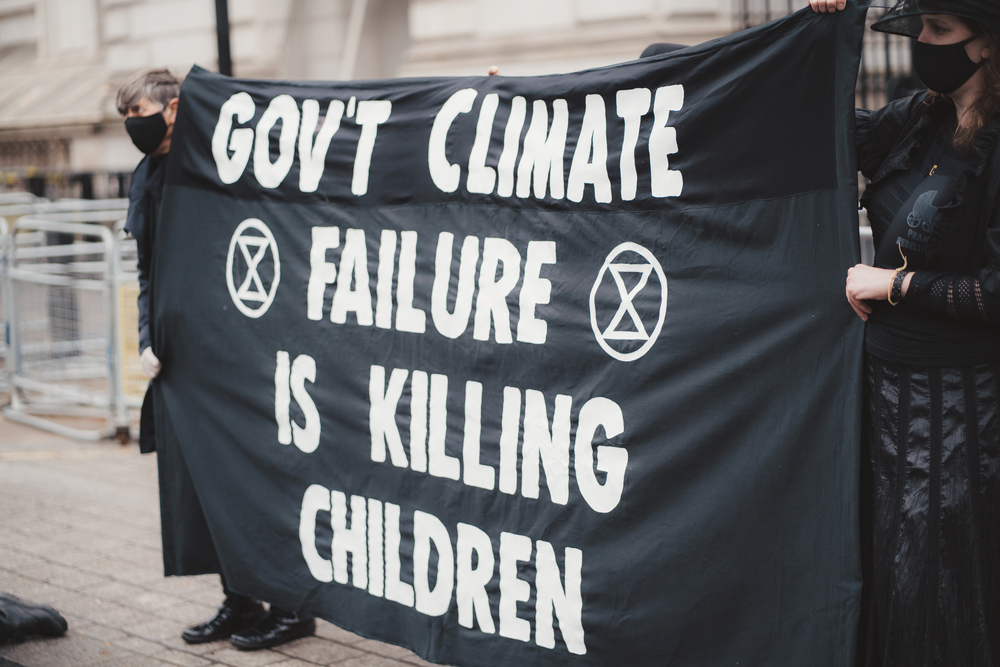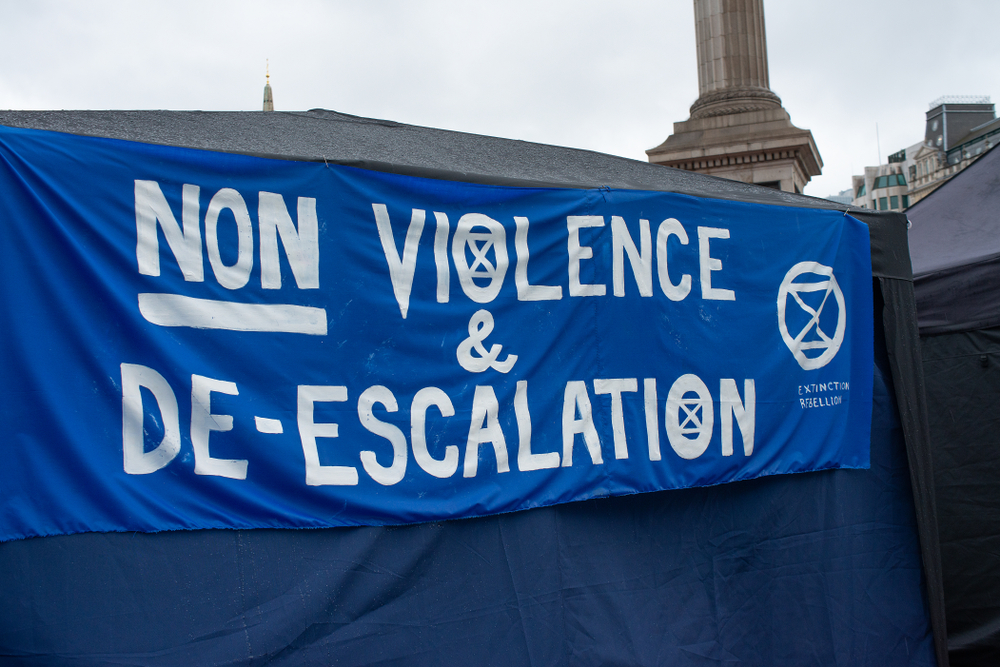Despite its urgency, states around the world have failed to make major reforms to tackle the climate crisis. So far, it seems that governments are unlikely to limit global temperature increases to the 1.5 to 2.0 degrees celsius necessary to prevent near-total ecosystem collapse.
Citizens take matters into their own hands
This global inaction by states has caused the formation of many environmental civilian protest movements. A powerful voice amongst these groups is Extinction Rebellion (XR) which has grown massively in the last three years. The organisation gained global attention through their varied and widespread actions around the climate crisis, widely publicised through both traditional and social media outlets. However, their tactics and inclusivity have often been a topic of debate, threatening their legitimacy.
What is Extinction Rebellion?
Extinction Rebellion is a nonpartisan and non-violent network created in the United Kingdom in 2018 out of frustration around the lack of action to combat the climate crisis and mass extinction of species. The group has three demands:
- Tell the truth: for governments to declare a climate emergency and communicate the urgency of the need to combat it
- Act now: by reducing greenhouse gas emissions to net zero by 2025
- Go beyond politics: by creating a citizens’ assembly on climate and ecological justice.
XR is a decentralized organization, where anyone is able to join as long as they follow XR’s ten principles. This decentralized structure has allowed the group to grow rapidly worldwide, but has also meant that actions taken are sometimes difficult to control as there is no central coordinating body.
For example, a protest aiming to block the expansion of London’s Heathrow airport took place despite widespread internal opposition. Many within XR were of the opinion that this protest—which flew drones into the airport’s airspace—was both dangerous, and would risk losing the goodwill the group gained with the public following April 2018 protests.
As can be seen by the negative attention sparked by the Heathrow protest, protest forms affect opinion among the public and policymakers, especially in times where social media can rapidly spread information. Because of this, XR must carefully consider its tactics when protesting.


Extinction Rebellion: their strategy
XR’s main form of action is Non-Violent Direct Action (NVDA) and is split into three subcategories: disruption (through mass civil disobedience), outreach (informing the public through protest or media) or visioning (demonstrating the future they want through creative action). Within civil disobedience, a crucial strategy XR uses is a focus on mass arrests. By getting many members arrested, they aim to overwhelm the justice system and draw media attention.
Within all three formulations of NVDA, physical and verbal non-violence is key. This tactic has been chosen based on research suggesting that nonviolent uprisings are twice as successful in achieving aims than violent uprisings.
Questions of inclusivity
Extinction Rebellion has faced criticism for failing to be inclusive of class, race and culture.
Despite attempts to appeal to more conservative themes such as national security or family interests, XR is primarily captured by the mainstream media as politically left-wing. Across the political spectrum, they have also been accused of not being inclusive of different social classes.
This became a central topic of discussion following a protest staged by XR that blocked a tube train full of commuters going to work in London. The public debated whether XR was being effective or simply hindering working-class people from getting to work and blocking public transport. In addition to this, singing or wearing animal costumes has been claimed to be alienating and not inclusive of different cultures.


The focus the group has on arrests is another aspect that has been criticised for being exclusive. Primarily, critiques have claimed that a focus on arrests does not acknowledge the different realities that people of color have with the police. The group Wretched of the Earth, a group of Indiginous, Black, Brown and diaspora groups in the UK and global south wrote a letter to XR asking them to rethink the way their tactics build on white privilege and fail to address perspectives of people of color and indiginous populations.
In response to concerns over issues of inclusivity, XR has made several tactical changes, openly appologised and addressed critiques. Following the shutdown of the London tube, XR admitted that the blocking of public transport was a mistake. The organisation promised to redirect its actions, and in the UK they now primarily focus on blocking businesses, financial institutions, and the government.
XR also announced on their website that they have acknowledged that in some cases “[white members of XR] will be treated differently / better than colleagues of colour” by police during protests. They add that participants can take several different roles during their protests, and don’t necessarily need to be arrested. There are also a number of branches of XR such as the XR Youth Wing, the Global Justice Rebellion and XR Internationalist Solidarity Network that have emerged to address issues of race, class and privilege within XR.


Walking a fine line: too radical?
While research has supported the effectiveness of civil disobedience, certain XR tactics have been the subject of public debate.
Despite claims that being too radical will negatively affect Extinction Rebellion’s public image, so far there is limited evidence of there being a significant backfire effect following civil disobedience in the climate movement. More than this, civil disobedience—as opposed to violence—has increased public support for movements. This is because it facilitates the recognition of the movement as a legitimate claimant to the issue, and is more difficult for authorities to suppress.
XR’s tactics of civil disobedience such as blocking roads or persons gluing themselves to objects have been publicly criticised for being overly radical and thus putting off potential supporters. Although they were later deemed not to pose a threat, In January 2020, British counter-terorrism police even placed XR on a list of extremist ideologies at risk of committing atrocities.
In April 2021, XR protestors in the UK smashed windows at a bank as part of a protest. Tactics such as this may risk harming the non-violent image they have worked hard to keep, and thus could alienate previously engaged members of the public. In September 2021, another XR protest was met with violent response by police in London where police smashed the windows of a XR bus where protestors were blocking the road and put individuals in headlocks.
The increase of these types of protests and the more extreme responses mark a shift towards the more radical turn in both XR tactics and state response, especially in the UK. Despite these trends, Extinction Rebellion remains a key organisation in the fight to bring climate-related policy shortcomings into the public eye.
Annabelle Willeme
The author of this article and UPF staff, including The Perspective Webzine editors, did not receive any compensation from Extinction Rebellion for the writing of this article.




